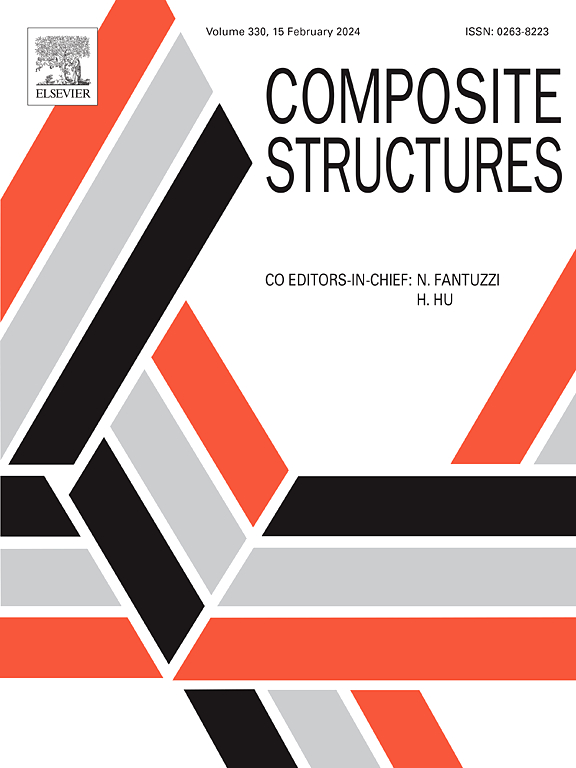Feasibility study on additive-manufactured honeycomb sandwich structural solutions for a Fast Patrol Vessel
IF 6.3
2区 材料科学
Q1 MATERIALS SCIENCE, COMPOSITES
引用次数: 0
Abstract
This work represents a significant step toward integrating additive-manufactured honeycomb sandwiches into ship hull structures. The sandwich structure consists of two continuous fibre-reinforced thermoplastic faces and a regular honeycomb core made of chopped fibre-reinforced thermoplastic. The primary goal is to create optimal manufacturing and design methods to determine to which extent the sandwich solution that has been analysed may be used as a structural component of a fast patrol vessel. The core of the design procedure is a purposely developed evolutionary multiobjective optimisation routine suited to evaluate the flexural response of the structure under investigation. The analytical formulations utilised to predict the structural response of an additive-manufactured honeycomb sandwich subjected to 3-point bending have been derived using a combined analytical and experimental approach. A fast patrol vessel made of steel has been taken as a reference to demonstrate the capabilities of the proposed solution. A steel primary stiffener and its associated plate have been extracted from the midship section and replaced by an additively manufactured honeycomb sandwich. By maintaining the same structural encumbrances, it has been found that a pseudo-optimal combination of the mechanical properties of the sandwich base materials can accomplish an exceptional weight reduction of three times.
快速巡逻艇添加剂制造蜂窝夹层结构解决方案可行性研究
这项工作标志着在将添加剂制造的蜂窝夹层融入船体结构方面迈出了重要一步。夹层结构包括两个连续的纤维增强热塑性塑料面和一个由切碎纤维增强热塑性塑料制成的规则蜂窝芯。主要目标是创建最佳的制造和设计方法,以确定所分析的夹层解决方案在多大程度上可用作快速巡逻艇的结构部件。设计程序的核心是特意开发的进化多目标优化程序,适用于评估所研究结构的挠曲响应。采用分析和实验相结合的方法得出了用于预测添加剂制造的蜂窝夹层在三点弯曲下的结构响应的分析公式。以一艘钢制快速巡逻艇为参照物,展示了所提解决方案的能力。钢制主加强筋及其相关板材已从舯部抽出,并用添加式制造的蜂窝夹层材料取而代之。通过保持相同的结构承载能力,我们发现夹层基材机械性能的假优化组合可使重量减轻三倍。
本文章由计算机程序翻译,如有差异,请以英文原文为准。
求助全文
约1分钟内获得全文
求助全文
来源期刊

Composite Structures
工程技术-材料科学:复合
CiteScore
12.00
自引率
12.70%
发文量
1246
审稿时长
78 days
期刊介绍:
The past few decades have seen outstanding advances in the use of composite materials in structural applications. There can be little doubt that, within engineering circles, composites have revolutionised traditional design concepts and made possible an unparalleled range of new and exciting possibilities as viable materials for construction. Composite Structures, an International Journal, disseminates knowledge between users, manufacturers, designers and researchers involved in structures or structural components manufactured using composite materials.
The journal publishes papers which contribute to knowledge in the use of composite materials in engineering structures. Papers deal with design, research and development studies, experimental investigations, theoretical analysis and fabrication techniques relevant to the application of composites in load-bearing components for assemblies, ranging from individual components such as plates and shells to complete composite structures.
 求助内容:
求助内容: 应助结果提醒方式:
应助结果提醒方式:


